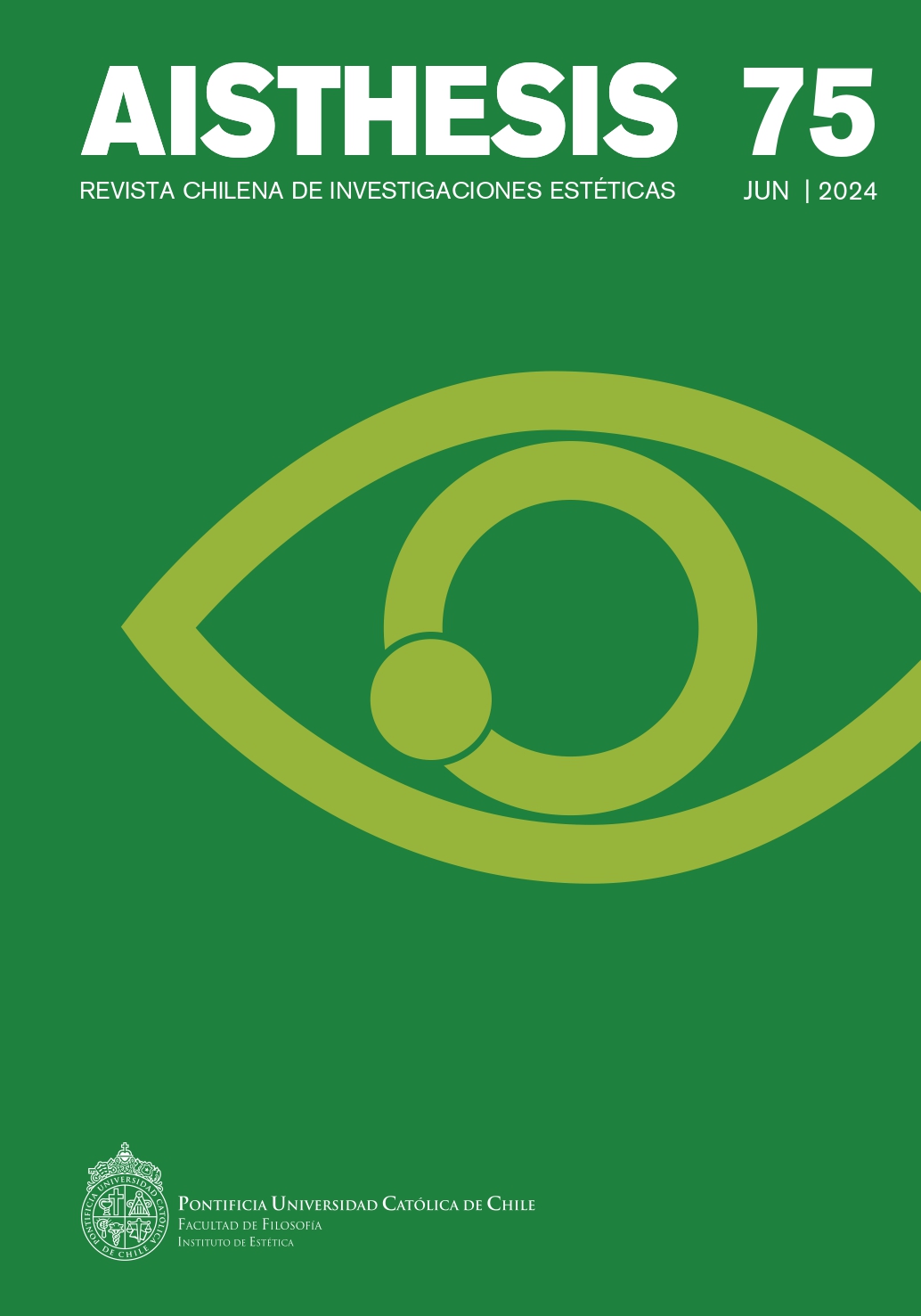Literature and Painting Practice: Rhetorical-Poetic Analysis of a Passage by L. B. Alberti
Main Article Content
Abstract
This article proposes a philological analysis of a passage from León Battista Alberti's painting treatise, particularly the one where the author compares the painting with an «open window». Widely surviving in modern theories of pictorial representation, such metaphorical expression would find its origin in certain rhetorical and poetic habits as typical of Renaissance humanism as they are singular and original in their theoretical-practical application, showing the existence of a deep alliance between figurations literary and visual imaginaries that have established themselves in our tradition.
Downloads
Article Details

This work is licensed under a Creative Commons Attribution-NonCommercial-ShareAlike 4.0 International License.
All contents of this electronic edition are distributed under the Creative Commons license of "Attribución-shareAlike 4.0 Internacional" (CC-BY-SA). Any total or partial reproduction of the material must mention its origin.
The rights of academic works published in this publication belong to their authors., who grant to AISTHESIS: Revista Chilena de Investigaciones Estéticas the license for its use. The management of the permits and the authorization of the publication of the images (or of any material) that contains copyright and its consequent rights of reproduction in this publication is the sole responsibility of the authors of the articles
References
Referencias
Alberti, León Battista. «De pictura». On Painting and On Sculpture. Trad. C. Grayson. Phaidon, 1972.
––. Tratado de Pintura. Trad. Carlos Pérez Infante, a partir de la versión inglesa de John Spencer. Universidad Autónoma Metropolitana, 1998.
––. De la pintura y otros escritos sobre arte. Introducción, traducción y notas de Rocío de la Villa. Tecnos, 2007.
––. De pictura. Versiones originales del texto disponibles en: http://www.ousia.it/ Recuperadas el 4 de abril de 2015.
Aristóteles. Retórica. Trad. Arturo Ramírez Trejo. UNAM, 2002.
Baxandall, Michael. Giotto y los oradores: la visión de la pintura en los humanistas italianos y el descubrimiento de la composición pictórica (1350 - 1450). Antonio Machado Libros, 2010.
––. Pintura y vida cotidiana en el renacimiento. Arte y experiencia en el quattrocento. Ampersand, 2016.
Benjamin, Walter. Libro de los pasajes. Trads. Luis Fernández Castañeda, Isidro Herrera y Fernando Guerrero. Ediciones Akal, 2007.
Blumenberg, Hans. Naufragio con espectador. Paradigma de una metáfora de la existencia. Visor, 1995.
Borges, Jorge Luis. Textos recobrados 1919-1929. Emecé, 2003.
Claro, Andrés. Imágenes de mundo. Bastante, 2016.
Elkins, James. The Poetics of Perspective. Cornell University Press, 1996.
García, Macarena. «La historia en la ventana: configuración y representación del tiempo en la ventana albertiana». ALPHA: Revista De Artes, Letras y Filosofía, vol. 1, nº 44, 2017. https://revistaalpha.ulagos.cl/index.php/alpha/article/view/1567
Grafton, Anthony. «Historia and Historia: Alberti’s Terminology in Context». I Tatti Studies in the Italian Renaissance, vol. 8, 1999. http://www.jstor.org/stable/4603711
Iommi, Alfonso. La orden infeliz. Catálogo, 2016.
Kemp, Martin. La ciencia del arte. Akal, 2000.
Mitchell, W. J. T. Teoría de la imagen. Akal, 2009.
Oyarzun, Pablo. Anestética del Ready Made. Universidad Arcis, 2000.
Panofsky, Erwin. Renacimiento y renacimientos en el Arte Occidental. Alianza, 1997.
Quintiliano. Instituciones Oratorias. Biblioteca Virtual Miguel de Cervantes Saavedra Universidad de Alicante. Disponible en http://cervantesvirtual.com
Ricoeur, Paul. Tiempo y Narración I. Configuración del tiempo en el relato histórico. Siglo XXI, 1995.
––. La metáfora viva. Trotta, 2001.
Starobinski, Jean. Acción y reacción. Vida y aventuras de una pareja. Fondo de Cultura Económica, 2001.
Vasari, Giorgio. Las vidas de los más excelentes arquitectos, pintores y escultores italianos desde Cimabue a nuestros tiempos. Cátedra, 2011.
